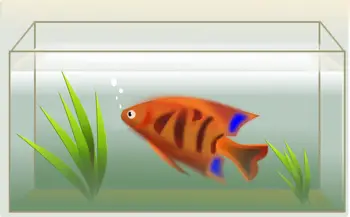
I have seen fishkeepers in aquariums ask about spikes in nitrites after water changes. At the time of writing this, none of the aquarium blogs addressed this issue or have concrete advice on what to do in such a situation. I decided to delve into this matter and help my fellow aquarists in their endeavor.
Spikes in nitrites or other tested parameters happens to everyone in this hobby. It is part and parcel of the learning curve, and you cannot escape it. How people handle these spikes is what worries me! It does worry me because fish react negatively. In dire situations, they might even die!
To understand what we must do, we should first understand what causes such spikes after water changes.
Causes of nitrite Spikes
Spike in nitrites or nitrates after water changes is primarily down to how the water change is performed. Of course, they are other factors in play that may cause the bump, and we shall address them too.
As I go through the possible causes, be keen to note what caused the spike in your tank; it will make things much easier for you in the long run. I also include my recommendations in what should be done to avoid the same where applicable.
The possible causes of nitrite spike after water change include:
-
Poorly performed water changes
The level of ignorance in the performance of water changes amongst the aquarium community is disheartening. Aquarists fuss about the nitrogen cycle and acclimatization of fish but won’t research a little about water changes before they do them. Even if they do their research, most online resources are misleading. Only a few, in my opinion, have got it right.
For instance, I see people talk about doing 50% water changes in forums and other online platforms. Such a big water change will shock your fish and possibly alter the ecological balance in your aquarium. Perhaps, the balance will shift insignificantly, but these mere changes lead to other big changes over time.
I recommend changing 15% to 20% of your water twice a week. The higher the stock or bioload in your aquarium, the higher the percentage of water that needs to go out. Ensure not to pass the 25% mark at any time.
Water treatment should be done before the water goes into the tank. It is no trouble if you treat it as it goes in. Some parameters, however, are best-taken care of before filling oof your tank. For example, the pH and temperature of the water going in should match that of water already in the tank.
Chemicals such as chlorine and chloramine can be taken care of immediately after the change. Remember to dose the full volume of your water and not the recommended value of water going in.
-
Reduction in Beneficial bacteria
Beneficial bacteria are vital to the survival of your fish in a tank. We often disregard their well-being and, rightfully, get punished for it; more like the fish get punished.
A well-performed water change should take into account the survival and growth of these bacteria. The bacteria are mainly located in the biofilter media; they can also be attached to other surfaces in your tank.
If you are like me, I mess with a couple of the surfaces (during water changes) to maintain algae growth in the tank. Such interference may lead to a slight reduction in the population of the bacteria.
Chemicals (mainly chlorine and chloramine) in your changed water may also kill off the bacteria, even at deficient concentrations.
When beneficial bacteria are reduced, nitrogenous toxins like nitrites may build up, causing a spike in their concentration. In such a scenario, a mini-cycle may commence, which is basically your tank restoring its balance. It would help if you were patient enough to let this mini-cycle finish without interference. Nitrite concentration will be back to normal once it is done.
A mini cycle will begin whenever there is an unaccounted reduction of the bacteria population. Changing out your filter media during water changes is not advised because of the high shift of ecological balance that comes as a result. Try scheduling a different date for this change.
Final thoughts
The most important thing is to be calm and collected in such a scenario. Avoid doing anything due to anxiety to fix the problem or panic about something terrible that might happen.
If you cannot determine the possible cause of the spike, you can maintain the level of nitrites by dosing with prime and slight water changes in 24 hour periods until the mini-cycle is over.
The mini-cycle won’t take a lot of time to complete as the bacteria is resent already, multiples faster with more food supply. Where the nitrogen parameters are not going doing, you should seek out the possible cause of reduction in bacteria during the water change and address that directly.
I lost some fish in my amateur years and beat myself up for it, and I still lost some fish later on. The best way to make up for mistakes is by learning and correcting them in the long run.